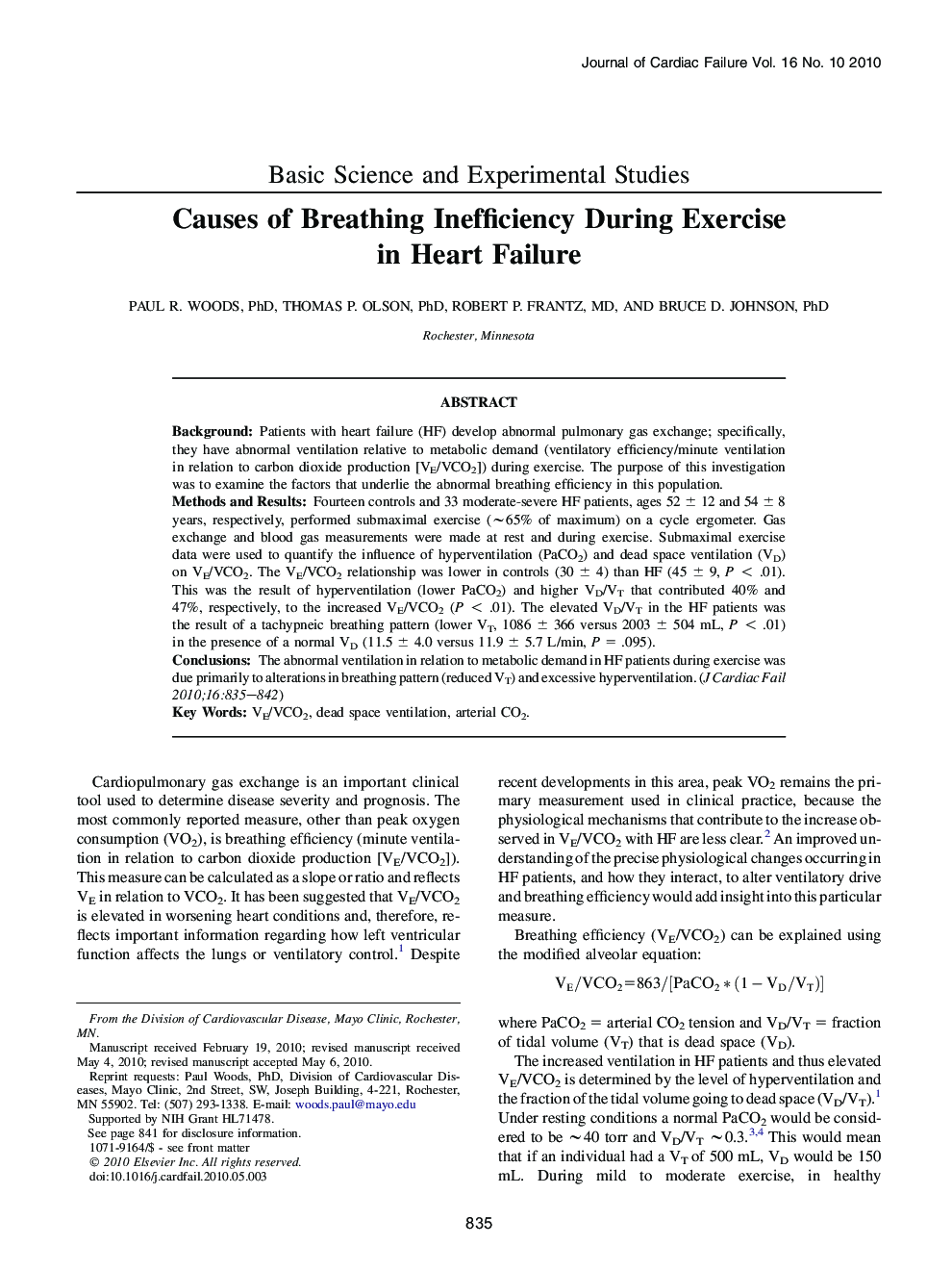| Article ID | Journal | Published Year | Pages | File Type |
|---|---|---|---|---|
| 2961307 | Journal of Cardiac Failure | 2010 | 8 Pages |
BackgroundPatients with heart failure (HF) develop abnormal pulmonary gas exchange; specifically, they have abnormal ventilation relative to metabolic demand (ventilatory efficiency/minute ventilation in relation to carbon dioxide production [VE/VCO2]) during exercise. The purpose of this investigation was to examine the factors that underlie the abnormal breathing efficiency in this population.Methods and ResultsFourteen controls and 33 moderate-severe HF patients, ages 52 ± 12 and 54 ± 8 years, respectively, performed submaximal exercise (∼65% of maximum) on a cycle ergometer. Gas exchange and blood gas measurements were made at rest and during exercise. Submaximal exercise data were used to quantify the influence of hyperventilation (PaCO2) and dead space ventilation (VD) on VE/VCO2. The VE/VCO2 relationship was lower in controls (30 ± 4) than HF (45 ± 9, P < .01). This was the result of hyperventilation (lower PaCO2) and higher VD/VT that contributed 40% and 47%, respectively, to the increased VE/VCO2 (P < .01). The elevated VD/VT in the HF patients was the result of a tachypneic breathing pattern (lower VT, 1086 ± 366 versus 2003 ± 504 mL, P < .01) in the presence of a normal VD (11.5 ± 4.0 versus 11.9 ± 5.7 L/min, P = .095).ConclusionsThe abnormal ventilation in relation to metabolic demand in HF patients during exercise was due primarily to alterations in breathing pattern (reduced VT) and excessive hyperventilation.
